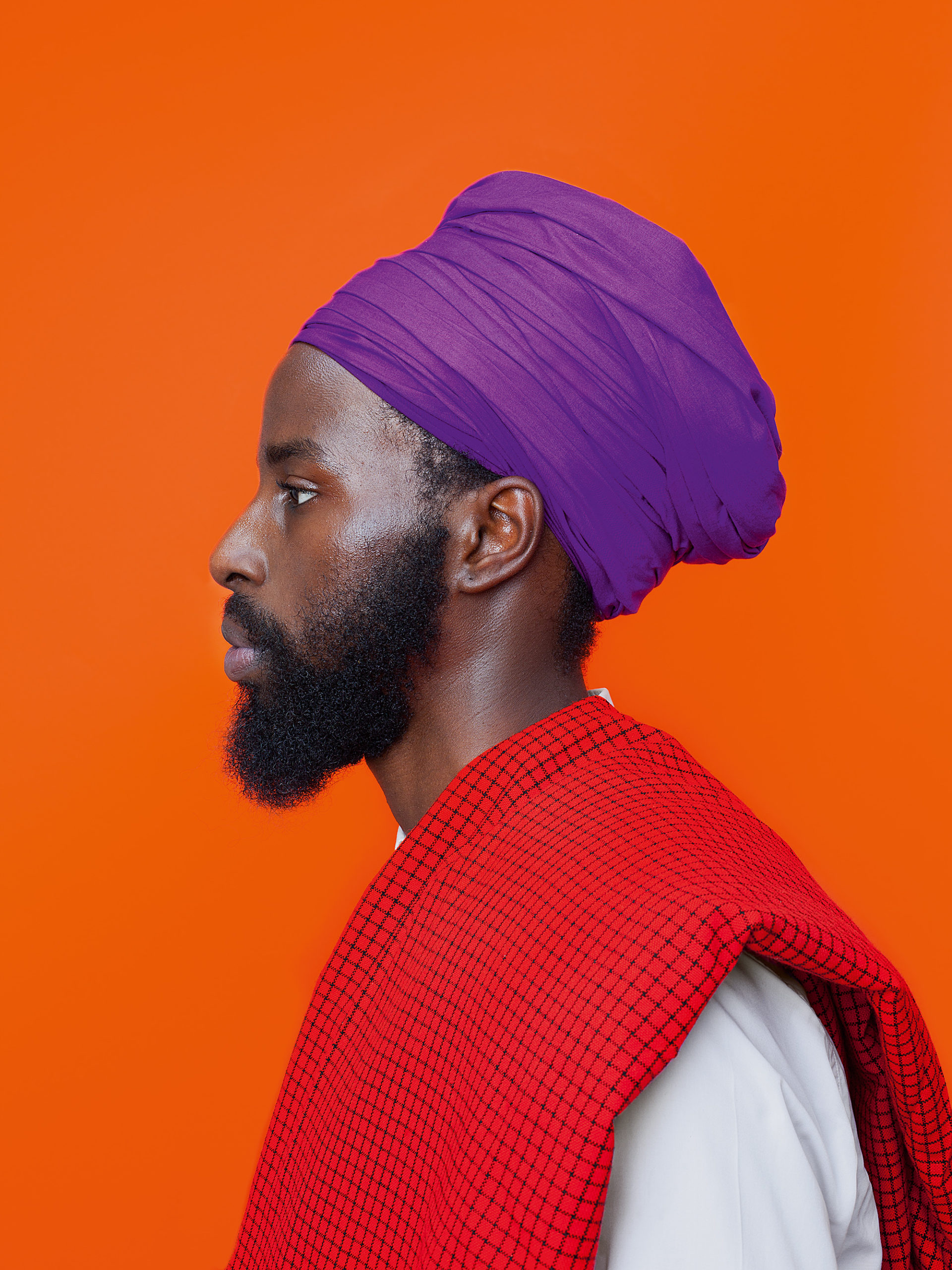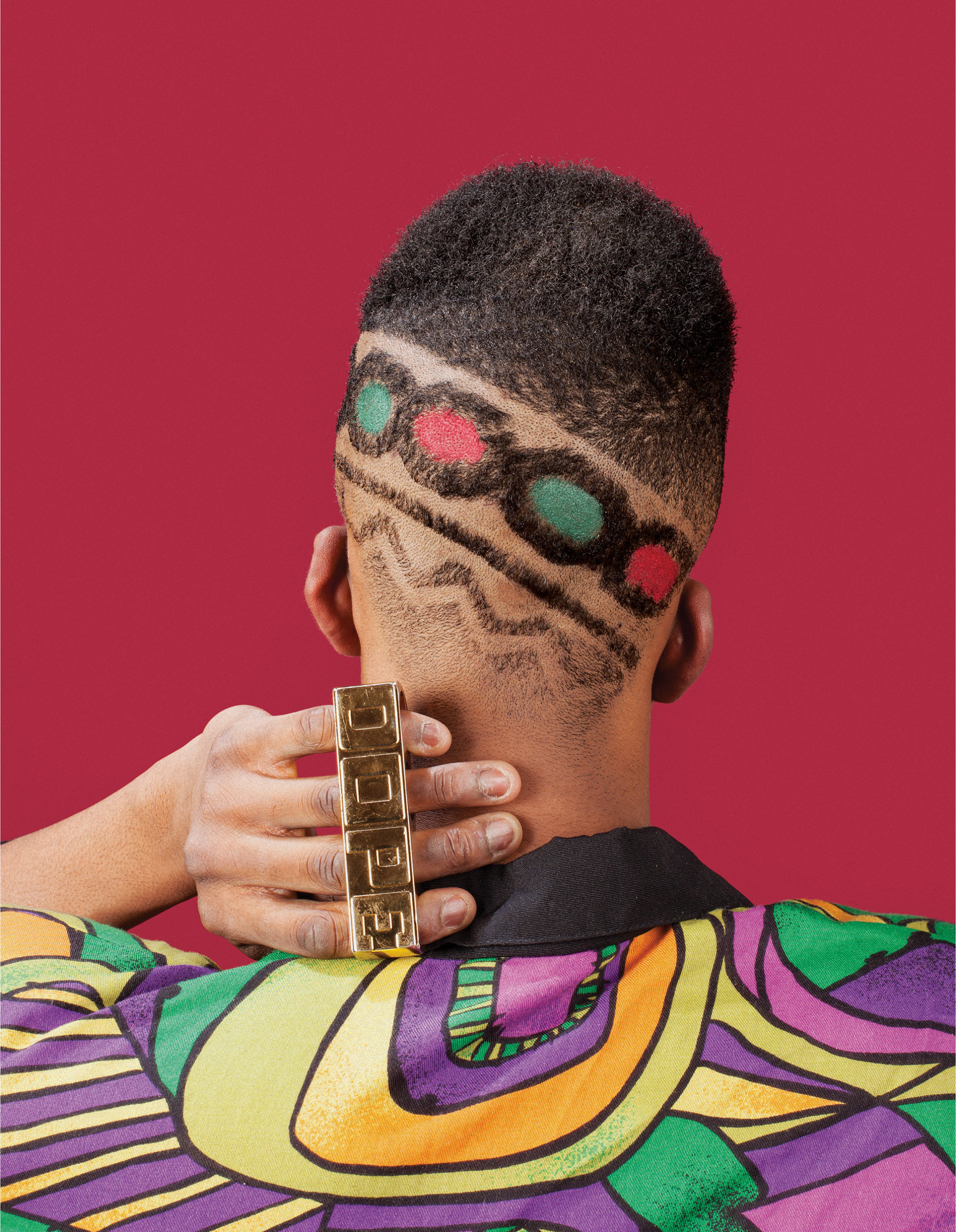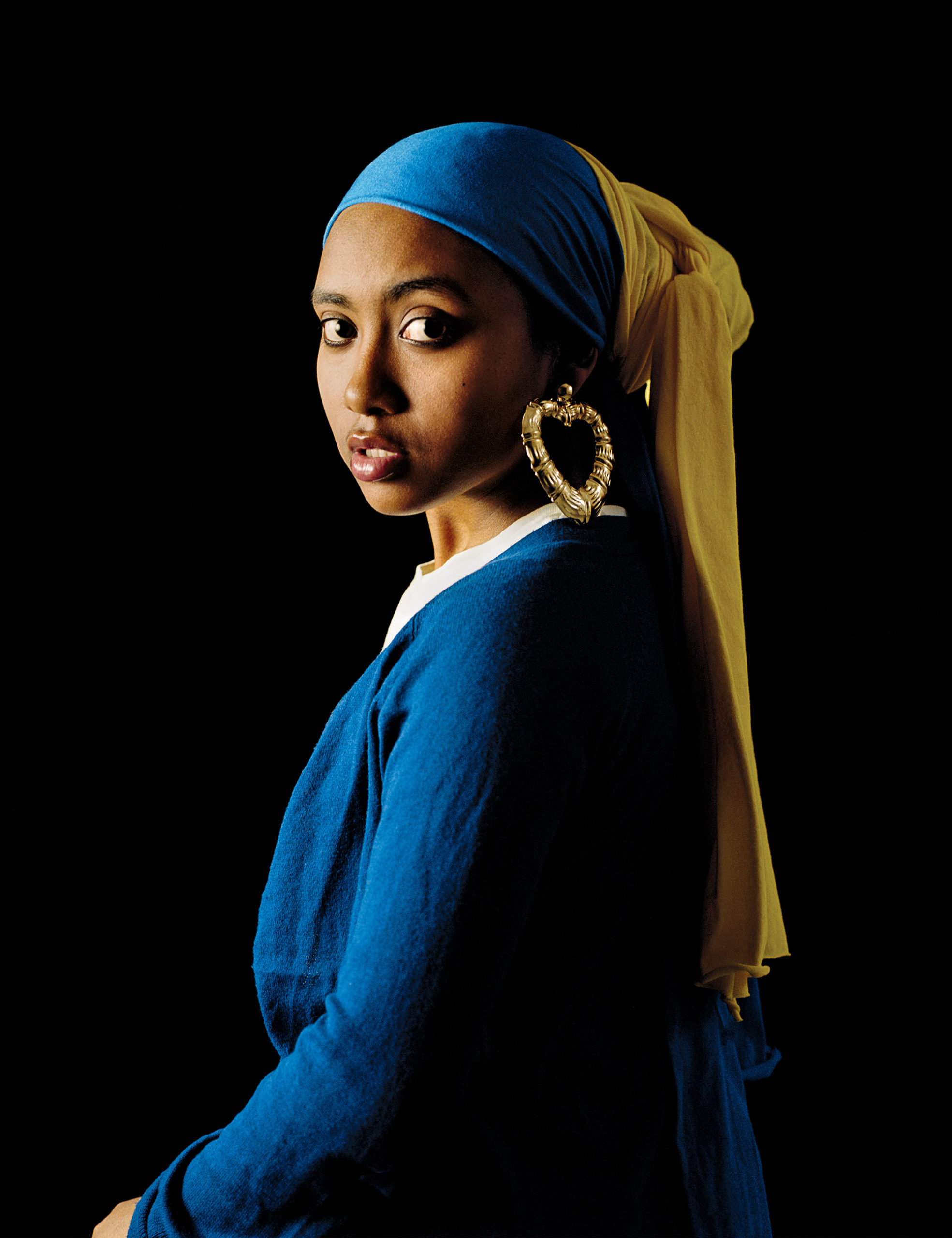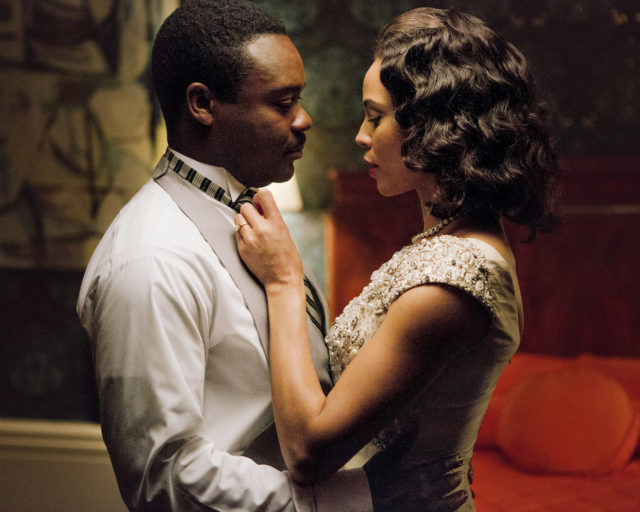Awol Erizku, Girl with a Bamboo Earring, 2009.
Courtesy the artist
Awol Erizku, born in Ethiopia, raised in the Bronx, and based in Los Angeles, effortlessly moves among photography, painting, sculpture, installation, and video. He also has a very active presence on social media, and with little notice one might catch an array of new images on Tumblr or a quick exhibition on Instagram. In 2009, he replaced Johannes Vermeer’s white girl wearing a pearl earring with a black one sporting bamboo. He substituted Leonardo da Vinci’s white lady cradling an ermine with a black woman embracing a pit bull. Exacting in pose and in detail, these images focus on the black body and its relationship to Western painting. These portraits, which force us to look at the work of the Old Masters through a black, diasporic lens, challenge Western art history’s almost blinding whiteness. Erizku’s strategy lays bare the act of seeing as culturally contingent and, more to the point, racially informed. His concerns fit quite neatly into a trajectory of African and Afro-Atlantic artists such as Robert Colescott, Renee Cox, Rotimi Fani-Kayode, Faith Ringgold, Yinka Shonibare, and Kehinde Wiley, who have explicitly used Western painting as the foundation for reimagining black subjectivity and the complicated workings of race in representation. At the same time, like Nina Katchadourian’s Lavatory Self-Portraits in the Flemish Style (2010), Girl with a Bamboo Earring and Boy with the Red Turban, which satirically references Orientalism, are also roguish and fun.

While the work of the Old Masters serves as fodder for Erizku’s formal, political, and intellectual interventions, it also confirms for him the importance of fashion in portraiture. Whether northern or southern, whether by Vermeer or da Vinci, style and dress were considered to be as important as composition, gesture, and pose in relaying the high social status of sitters. Erizku combines the lessons of the Old Masters with sensibilities from two mentors: the formal exactitude of Lorna Simpson’s “archival” portraits and the sensual, often humorous theatricality of David LaChapelle’s photographic spectacles. Erizku’s images are far less statements about fixed black identities than they are analyses of subjects under construction.
In 2014, the artist created a series of portraits for Vogue of attendees at the tenth annual Afropunk Fest, held in Brooklyn’s Commodore Barry Park. Ostensibly an exploration of black hair, the resulting images exult in the gap between portrait and mug shot. In this liminal space, Erizku deconstructs and reconstructs; he testifies and signifies; he profiles and represents; and, to borrow from Henry Louis Gates, Jr., he serves us race and explores the difference it makes.

Erizku’s portraits exist as wry exegeses on profiling, which, in African American contexts, can be read numerous ways. As a tool of the state, it supports and continually reinforces a norm of black stereotyping that upholds myths of black social and cultural inferiority and criminality, sustains the right of law enforcement and vigilantes to murder unarmed black men and women with impunity, insists that those slaughtered deserved what they got, and makes necessary movements like #BlackLivesMatter. Profiling as seen in Erizku’s portraits is also the ancestor of vogueing. It’s a black sartorial snap: Walking into a room and owning it, knowing you look fierce. Taking for granted that the world is your runway and onlookers had better move aside and take their tired, stereotypical bullshit with them. And profiling is a photographer’s tool—Erizku is profiling sitters engaged in profiling.
His fabulous, self-possessed sitters resist any negative meaning. They will not be categorized or terrorized. In making these photographs, in playing with multiple levels of identity, Erizku, like the band Funkadelic, exhorts, “Free your mind and your ass will follow.”
Read more from “Vision & Justice” or subscribe to Aperture and never miss an issue.


























